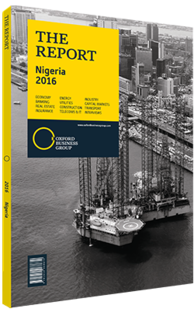Government and private sector players invest in new facilities and projects in Nigeria
Crude oil refining emerged early on as an area of focus for the government of Muhammadu Buhari, who within weeks of assuming office as president had begun rolled out plans to overhaul the existing facilities. The government has also initiated a fresh attempt to build new plants, with a focus on attracting private investment, such as the Dangote Group’s 650,000 barrels per day (bpd) complex in the Lekki Free Trade Zone of Lagos State.
Long History
Refining had traditionally been under the control of the Nigerian National Petroleum Corporation (NNPC), but the government has been inviting others in since the presidency of Olusegun Obasanjo, who took office as elected president in 1999, at the start of the current democratic era in Nigeria. Under Obasanjo 18 licences to build smallscale modular refineries were awarded to investors in 2002, but did not result in additional refining capacity.
In 2005 the NNPC established the Greenfield Refinery Projects Division as a response to what it perceived as an inability of the private sector to develop refineries, due to a shortage of project-development capabilities and access to finance. Under this approach, the NNPC was to develop consortia with minority interests in the private sector to develop refineries to operate on a commercial basis, which would be “completely market oriented and profit motivated’’, according to the NNPC web site. However, this process has taken some time to yield the desired results. In early 2015 the government requested bids, and received nine, to build a series of new large-scale refineries. Bidders included Dutch energy group Vitol and domestic firm Seplat Petroleum Development. They are expected to propose new facilities at the sites of the existing refineries, with this projected to add at least 250,000 bpd in new capacity.
Another 23 licences for modular refineries were issued in October 2015. These facilities, also known as “topping plants”, typically have a capacity of about 30,000 bpd or less, but are seen as investments that can reach the commissioning stage faster, with construction taking 12 to 18 months, rather than years.
Challenges
Investment in building new facilities comes with several obstacles, some of them similar to those for operating and reforming existing ones (see analysis). Many downstream consumer fuels remain regulated by the state, and if oil prices rise crude could cost more than the products it is to be refined into. While the state has in the past designed schemes to ensure a profit margin for downstream product markets, the regulated pricing structure remains a complicating factor.
Access to finance also remains an ongoing challenge. The sustained low oil prices and the concomitant loan restructurings in Nigeria’s banking sector – in many cases from energy companies – has meant that it may be more difficult in the near term for the hydrocarbons industry to access bank lending, although new initiatives are being planned (see Banking chapter). Roughly 40% of outstanding credit as of March 2016 had already been extended to customers in the oil, gas and power sectors of the economy, and the level of non-performing loans was on the rise.
Feedstock may be a challenge for both existing and planned refineries, while output from refineries currently under development– such as the Dangote Group’s project –will also undoubtedly have an impact. As of mid-2016 the facility has no formal obligation to sell any output in the domestic market, suggesting that smaller local producers could find their niches and provide this supply. Furthermore, if they can secure the ability to export, as Dangote Group has, the wider continental market also looks attractive. As of 2014 refining capacity for all of Africa was at 3.56m bpd, or 3.7% of world supply. If the Nigerian government’s efforts to further develop the refining sector are successful, they could position the country as a major supplier of consumer fuels across Africa.
You have reached the limit of premium articles you can view for free.
Choose from the options below to purchase print or digital editions of our Reports. You can also purchase a website subscription giving you unlimited access to all of our Reports online for 12 months.
If you have already purchased this Report or have a website subscription, please login to continue.

